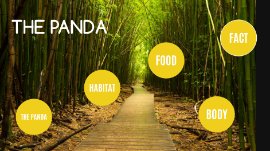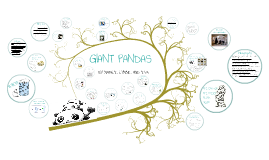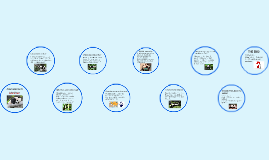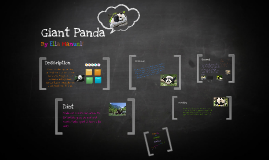PANDA PRESENTATION
Transcript: IDENTIFICATION OF THE GIANT PANDA *A PANDA'S MAIN FOOD SOURCE IS BAMBOO *ABOUT 99% OF THEIR DIET IS BAMBOO *GIANT PANDAS CAN ALSO GET FOOD FROM SMALL MAMMALS ENVIRONMENTAL CONDITIONS OF LOCATION YEAR OF FIRST APPEARANCE ON EARTH AS PRESENT DAY SPECIES GIANT PANDA ADAPTATION NEEDED FOR SURVIVAL CHARACTERISTICS: COMMUNITY STATUS * COMMON NAME: GIANT PANDA *TAXONOMICAL NAME GENUS: AILUROPODA SPECIES: MALANOLEUCA AILUROPODA MELANOLEUCA THE PRESENT DAY PANDA LIVES IN THE: *PHANEROZOIC EON *CENOZOIC ERA *QUATERNARY PERIOD *HOLOCENE EPOCH *GIANT PANDAS ARE DEFINITELY A CONSUMER * PANDAS CANNOT PRODUCE THEIR OWN FOOD SO THEY CANNOT BE A PRODUCER *THEY ARE CONSUMERS AND WILL EAT PRODUCERS SUCH AS FLOWERS AND BAMBOO * THE GIANT PANDA IS BOTH A PREY AND A PREDATOR * GIANT PANDAS ARE PREY BECAUSE THEY HAVE MANY ANIMALS WHO HUNT THEM INCLUDING: HUMANS, SNOW LEOPARDS, WILD DOGS, JACKALS, ETC. *THE PANDA IS A PREDATOR TO SMALL ANIMALS LIKE FISH OR RODENTS Bibliography CHARACTERISTICS: OMNIVORE GIANT PANDAS NEOGENE PERIOD: *GRASSLANDS AND SAVANNAS SPREAD ACROSS MOST CONTINENTS *TIME OF GLOBAL COOLING AND DRYING OF THE ENVIRONMENT *PANAMANIAN LAND-BRIDGE BETWEEN NORTH AND SOUTH AMERICA APPEARED *ACCUMULATION OF ICE AT THE POLES LED TO THE EXTINCTION OF MOST SPECIES THERE *ADVANCE OF GLACIERS AND ICE AGES *ATLANTIC AND PACIFIC OCEAN SEPERATED *TECTONIC PLATES FORMED THE HIMILAYES *MEDITTERANIAN SEA DRIED UP CHARACTERISTICS: PREDATOR OR PREY GENETIC EVIDENCE OF COMMONALITY BETWEEN ANCESTRAL ORGANISMS ADAPTATION NEED TO SURVIVE: -GIANT PANDA TEETH CHANGED FROM EATING MEAT TO EATING BAMBOO *ADAPTATIONS NEEDED TO SURVIVE: -"SIXTH TOE" NEEDED FOR GRASPING BAMBOO -STRONGER JAW MUSCLES FOR EATING BAMBOO -ESOPHAGUS, ADAPTED WITH SPECIAL LINING TO HELP DIGEST BAMBOO *THE FIRST SET OF FOSSILS IS THE PYGMY GIANT PANDA, THE SECOND IS THE AILUROPODA BACONI PANDA, AND THE LAST ONE IS THE MODERN DAY GIANT PANDA *THESE FOSSILS SHOW THAT THE GIANT PANDA HAS REMAINED LARGELY UNCHANGED WITH EXCEPTION TO HOW IT HAS GROWN LARGER OVER TIME AND HOW THEIR TEETH HAVE EVOLVED FROM EATING MEAT TO EATING BAMBOO * PANDAS LIVE IN BAMBOO FORESTS. ENVIRONMENTAL CONDITIONS OF A BAMBOO FOREST: * MOSTLY FOUND IN TROPICAL AND SUBTROPICAL PLACES * BAMBOO FORESTS LIKE HUMIDITY, RAIN, AND LOTS OF NUTRIENTS IN THE SOIL * THE GIANT PANDA'S HABITAT IS BEING DECREASED DUE TO DEFORESTATION *THEY ARE ALSO BEING LOST DUE TO DEVELOPMENT AND AGRICULTURE, WHICH IS A SMILAR MANNER TO HOW NATURAL FORESTS ARE DECREASING SKELETON OF A GIANT PANDA http://giant-panda.com/pandacool.html *GIANT PANDAS LINE IN FORESTS IN CHINA THAT HAVE BROAD LEAVES AND DENSE UNDER STORIES OF BAMBOO *THEY INHABIT THE MOUNTAIN RANGES OF SICHUAN, SHAANXI, AND GANSU PROVINCES WHICH ARE AT ELEVATIONS BETWEEN 5,000 AND 10,000 FEET *GIANT PANDAS USE TO LIVE IN MUCH MORE OF CHINA BUT DUE TO RISING POPULATION AND FARMING, GIANT PANDAS NOW LIVE EXCLUSIVELY IN MOUNTAIN RANGES *GIANT PANDAS ARE SOLITARY ANIMALS THAT EITHER LIVE ALONE OR IN SMALL GROUPS * THEY USUALLY ONLY GATHER DURING MATING SEASON OR WHEN A FEMALE GIVES BIRTH TO A BABY PANDA Bibliography GIANT PANDA ADAPTATIONS NEEDED FOR SURVIVAL Bibliography THE GIANT PANDA'S COMPARISON OF ANATOMY TO OTHER ORGANISMS *GIANT PANDAS ARE OMNIVORES BECAUSE THEY EAT BOTH PLANTS AND ANIMALS *MOST PEOPLE THINK THAT A PANDA'S DIET IS JUST BAMBOO BUT THEY DO EAT MEAT GEOLOGICAL EVENTS THAT OCCURRED DURING THE PERIOD WHEN GIANT PANDAS EMERGED (THAT SIMPLY MEANS BLACK AND WHITE BEAR) CHARACTERISTICS: FOOD SOURCE BYE!!!! PLACEMENT ON GEOLOGICAL TIME SCALE CONSUMER FOSSIL: PYGMY GIANT PANDA SKULL PICTURE OF A PRESENT DAY GIANT PANDA *"From Pygmy to Panda." science 2.0. ION Publications LLC, 18 Jun 2007. Web. 15 Apr 2013. http://www.science20.com/news/from_pygmy_to_panda. *"Giant Panda." WWF. WWF, n.d. Web. 15 Apr 2013. http://wwf.panda.org/what_we_do/endangered_species/giant_panda/ Collins, Allen. "Geologic Time Scale." UCMP. UCMP, 26 Nov 1994. Web. 15 Apr 2013. http://www.ucmp.berkeley.edu/help/timeform.php *Bryner, Jeanna. "First Skull of Earliest Giant Panda Found." LIVE SCIENCE. Tech Media Network, 18 Jun 2007. Web. 16 Apr 2013. http://www.livescience.com/1633-skull-earliest-giant-pandas.html *"Panda Facts." Pandas International. Primary Digital, n.d. Web. 16 Apr 2013. http://www.pandasinternational.org/giantpanda.html. *"Behaviour of Giant Panda." CRI English. CRIENGLISH.com, 6 Jan 2006. Web. 16 Apr 2013. http://english.cri.cn/725/2006/01/06/202@41615.htm. CHARACTERISTICS: ANATOMY COMPARISON: GIANT PANDA TO HUMAN BY NATALIE, LYNNE, AND IEVA IMAGES OF THE FOSSILS OF THE ANCESTORS OF THE ORGANISM: PYGMY GIANT PANDA "Where do pandas live?." Want to know it?. Want to know it?. Web. 15 Apr 2013. http://wanttoknowit.com/where-do-pandas-live/ . "Giant Panda." Smithsonian National Zoological Park. Smithsonian Institution. Web. 15 Apr 2013. http://nationalzoo.si.edu/animals/giantpandas/pandafacts/default.ctm . Judith, Bell. "The Bamboo Forest-Be Green." Be Green. Best of

















